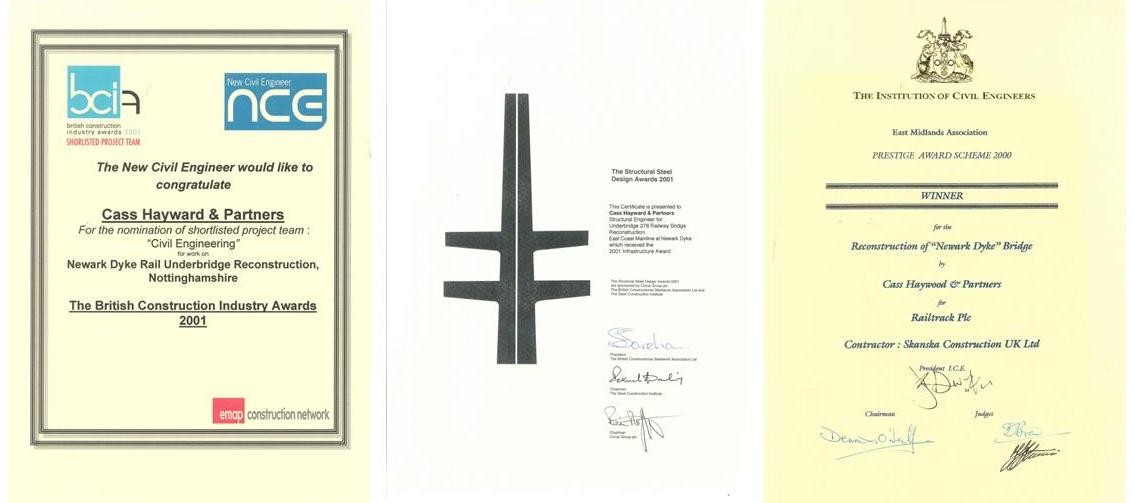East Coast Main Line (ECML) Underbridge 278 Reconstruction – Newark Dyke
Client
Railtrack and Skanska (UK) Ltd
Project Description
The existing ECML skewed crossing of the River Trent at Newark Dyke comprised two 1890 plan-staggered single-track steel Whipple Murphy truss bridges. Reverse track curves limited speeds at the site and helped to encourage the decision to reconstruct a structure near to the end of its service life. A high profile design was sought for the strategic river crossing. Cass Hayward’s design was for a two track, 77m clear span bowstring half through bridge carried on new outboard foundations to avoid uncertainties associated with re-use of the existing abutments.
During construction the main bowstring girders were launched out individually over the river adjacent to the existing live bridge and slid transversely to allow installation of the cross girders using a purpose-made gantry. Following completion of the deck slab and waterproofing the bridge was successfully slid into place during a 72 hour railway possession. During the same possession the old bridges were slid out on parallel staggered slide paths.
Cass Hayward Role(s)
- Principal inspection and assessment of residual strength of existing structure together with design of short term-holding repairs
- Monthly safety inspections prior to implementation of strengthening
- Tender design for entire bridge reconstruction including construction methodology
- Detailed design of bridge superstructure
- Temporary works design
Project Statistics
- Construction cost £9.3m
- Completed August 2000
Special Features
- Special consideration of dynamic effects from higher speed trains – the new bridge was the first completed in the UK which was designed to counteract the dynamic effects of high speed 140mph trains
- Special analysis for passenger comfort
- Steel & concrete composite virtually isotropic floor for exceptional stiffness under higher speed trains
- Square span to eliminate potential problems with track maintenance and dynamic behaviour with widely-spaced main truss girders chosen to minimise deformations and allow the tracks to be relocated for higher speeds
- Steel members with practicable and fatigue resistant welded end connections avoided possible maintenance liability of alternative ropes, strand or hollow sections
- New independent piled foundations constructed outside the hazard zone of the railway to minimise construction during possession. Steel box girder cross-heads spanning between pile caps and “needled” through the existing abutments also served as slide paths during installation
Awards
- Structural Steel Design Awards 2001 - Infrastructure Award
- National Rail Awards 2001 - Project of The Year
- Institution of Civil Engineers East Midlands Association 2002 - Project Award 2002
- Reference: IABSE Symposium, Antwerp 2003: Structures for High-Speed Railway Transportation. Paper: The Design, Construction and Performance of Newark Dyke Railway Bridge by Alan Monnickendam


1.jpg)
1.jpg)
1.jpg)
1(1).jpg)
1.jpg)
1.jpg)
1.jpg)
1.jpg)
1(1).jpg)
1.jpg)